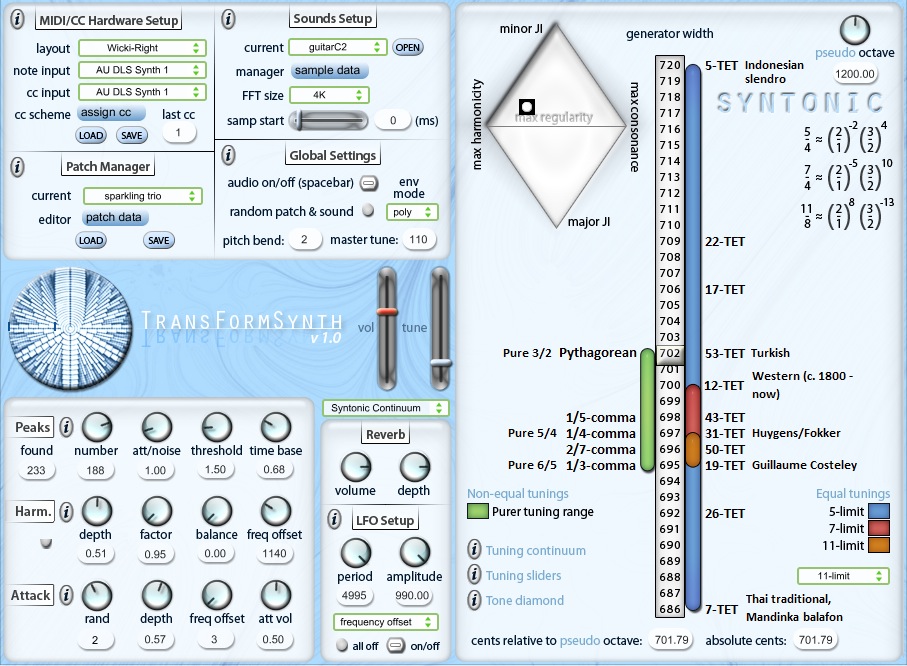

About the TransFormSynthCarlos looked forward to the day when it would be possible to perform any sound in any tuning: "...not only can we have any possible timbre but these can be played in any possible tuning... that might tickle our ears" [from the Secrets of Synthesis]. The TransFormSynth addresses two issues that have hindered the realization of this goal: the ability to specify and implement detailed control over the timbre/spectrum of the sound, and a way to organize the presentation (and physical interface) of the many possible timbres and tunings.The TransFormSynth implements an analysis-resynthesis that separates the overtones of a sound from the noise portions. In the resynthesis, it is possible to move the overtones to any desired frequency. This allows unprecedented control over the timbre, and allows sculpting of the sound for compatibility with a wide variety of tunings. Because the timbre and the tuning can change in a coordinated fashion in real time in response to the position of the various controllers and sliders, we call this dynamic tonality. The core audio routines (in java) were written by Bill Sethares and Stefan Teidje. Gerard Pape (and the gracious support of CCMIX during visits in 2005-2007) gave us the time and motivation to make it a reality. The keyboard mappings and layouts are the joint work of Andrew Milne, Bill Sethares and Jim Plamondon, and are documented in an article from the winter 2007 issue of the Computer Music Journal "Isomorphic Controllers and Dynamic Tuning: Invariant Fingering Over a Tuning Continuum." There are some fairly interesting mathematics underlying this, and we have also written Tuning Continua and Keyboard Layouts. for the J. Math and Music. The graphics and layouts were designed by Anthony Prechtl. You can find out more about how the TransFormSynth works by clicking on various places in the user interface or by clicking on the little information icons 
|
©2008 William Sethares; site design by Anthony Prechtl |